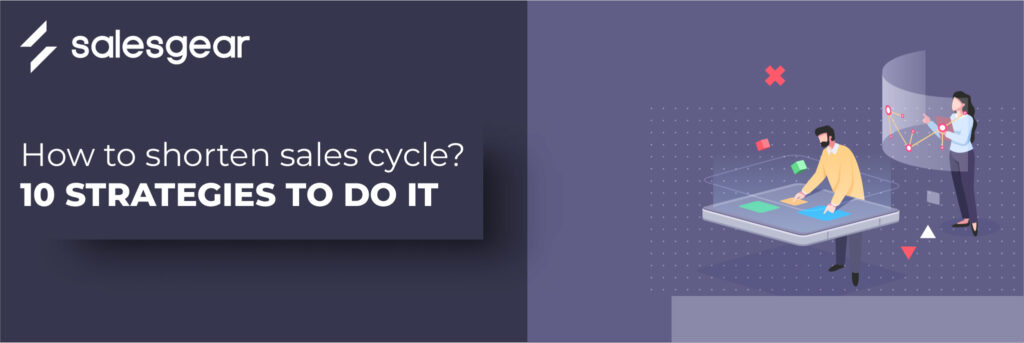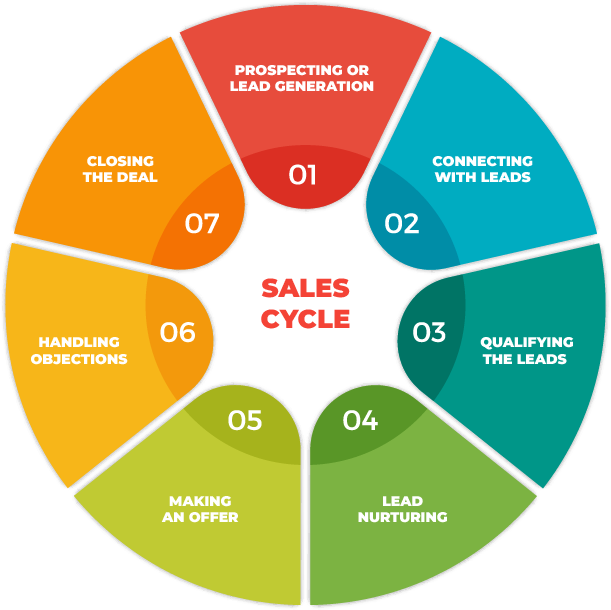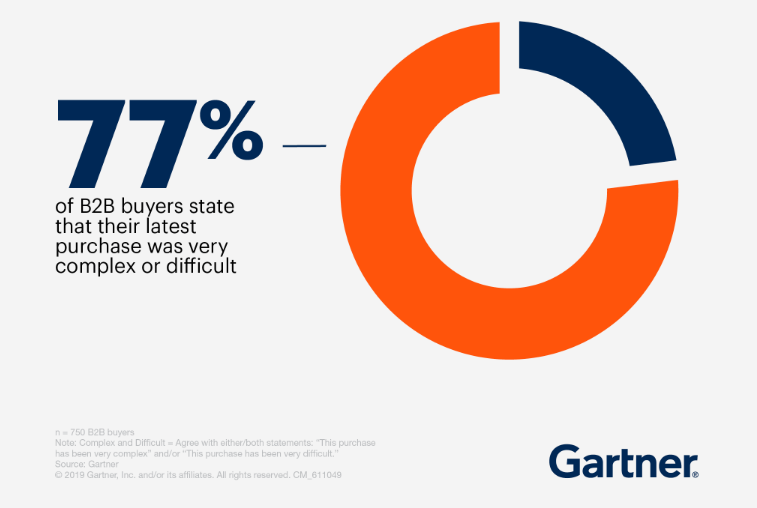
A B2B Buyer Behavior Survey 2022 report by Demand Gen shows that the purchasing timelines of 55% of buyers have grown. This means a lengthier and slower sales cycle. The length of your sales cycle can significantly impact your revenue, cash flow, and overall business success. This article will explore practical strategies for how to shorten sales cycle and achieve faster results.
What is a Sales Cycle?
A sales cycle represents the series of steps that a prospect goes through from initial contact to becoming a paying customer. From finding leads to closing them, the process usually takes 6-9 months for a B2B SaaS firm.

What factors affect the length of a sales cycle?
Measuring or at least knowing the length of your firm’s sales cycle is paramount. It helps you in identifying bottlenecks in your sales process. This, in turn, helps you in taking proactive steps to streamline your customer journey from the first touchpoint to the last.
Formula to calculate the length of your sales cycle
| Average sales cycle length = Total Number of days to close all deals / Total Number of deals |
Suggested Read: Key Sales Metrics to Track for Sales Leaders to Propel Success
Several factors affect the length. Some of these are-
- Cost of your product
- The complexity of your product
- Average customer size
- Sales rep turnover ratio
- Competition
- Product market fit (PMF)
- Perception of your product in the market
Understanding these factors is crucial in devising effective strategies for shortening the sales cycle.
But, why shorten the sales cycle?
A shorter sales cycle means
- Faster revenue generation
- Increased profitability
- Improved Cash flow, as deals are closed more quickly, leading to more efficient use of resources.
- Enhanced customer experience. This reduces the risk of prospects losing interest or seeking alternatives.
- Gaining a competitive advantage in the market, capturing opportunities before your competitors do.
Now that you know why you should be doing it, let’s delve deeper into the strategies.
Top 10 strategies to know how to shorten sales cycle
Automation and AI
Leveraging AI tech is extremely critical in today’s cutthroat competition. You should enhance lead qualification, personalize communication and provide real-time assistance. Also, you should be making data-driven decisions, automating follow-ups, and streamlining sales processes.
Ultimately, AI and automation enable sales teams to work smarter, close deals faster, and deliver a more seamless buying experience for customers.
Customers don’t care at all whether you close the deal or not. They care about improving their business. It’s easy to forget this in the heat of a sales cycle
– Aaron Ross
Target the right prospects
Starting point! Any sales cycle begins with targeting the right prospects. Let’s say you talk with some prospects, and lead them through the funnel, only to find that they’re not the right ones! What a waste of time (lengthier sales cycle) and energy that would be!
So, focus your prospecting efforts on those most likely to convert. To do this, identify your ideal customer profile (ICP) and conduct thorough research. Use data and market research to narrow down your target audience. Reach out to the decision-makers at the earliest possible.
Show a Clear value proposition
What’s your USP? You need to know if you want to stand out from the crowd. Clearly articulate the unique value and benefits your product offers. Craft a concise and impactful message that resonates with your target audience.
And then, keep on refining until you get it just right. A strong value proposition helps prospects understand the immediate and long-term benefits, accelerating their decision-making process.
Improve multi-channel communication
To shorten the sales cycle, communicate with prospects through multiple channels. A combination of email, phone calls, social media, and in-person interactions to engage with your prospects at various touchpoints.
However, the important thing is you should know where your prospects are! Adopt a cohesive omnichannel strategy that ensures consistent messaging across all channels. You’d want to create a seamless and personalized experience for prospects.
This approach allows you to reach prospects through their preferred communication channels, increasing engagement and expediting the sales process.
“Your sales reps have roughly 5% of a customer’s time during their B2B buying journey.”- Gartner report on B2B buyer journey
Identify pain points and…
…their goals and dreams too! You see, understanding your buyer’s pain points is extremely crucial. Knowing exactly what their challenges are can be a game changer for you. Just, don’t stop at that.
Getting to know the person helps in this long game. Try making the decision maker, you’re reaching out to, your champion! Knowing what aspires them professionally can take your business growth to new heights.
Handle objections from the start
Address objections upfront. You should know this strategy if you want to know how to shorten sales cycle. Anticipate common objections and prepare compelling responses that your prospects can’t object to.
Proactively address objections during the sales process to prevent them from becoming roadblocks. This creates the impression that you know what you’re doing. This way you can instill trust and move the conversation forward much faster.
Build trust and confidence
There are at least 6-10 people involved in a B2B buying decision. It becomes a task to keep every stakeholder on the same page.

The range of potential solutions available to B2B buyers is expanding with the emergence of new technologies, products, suppliers, and services.
These factors contribute to the growing complexity customers face when making purchasing decisions. This is why over 77% of customers described their buying process as highly challenging, according to a survey conducted by Gartner (see image).
Don’t fail to plan
When dealing with decision-makers in the sales process, approach each interaction with a clear objective and a well-defined plan. Anticipate potential objections or concerns they may have and have responses ready beforehand.
By planning each conversation, you can ensure that you have a structured agenda and a set of talking points to guide the discussion. This, as mentioned earlier, instills confidence and trust and helps in speeding up the sales process.
Avoid exchanging 100’s emails to schedule meetings
Don’t frustrate your prospect. A series of back-and-forth conversations and emails, just to get a meeting scheduled shows inefficiency at your end.
Use a meeting scheduler (like Salesgear) to avoid this exchange. These tools can eliminate the wastage of time that comes with manual scheduling. Also, they integrate with your CRMs and calendars well, so you’re always at the top of your scheduling game.
Follow up, follow up, follow up
Everything is done right and all is well until it’s time to close the deal.
Success isn’t guaranteed, so show up and follow up with the prospect on their decision.
Automate follow-up actions, such as sending personalized follow-up emails, scheduling next steps, or setting reminders for sales reps. By automating these tasks, sales teams can ensure timely and consistent follow-up, reducing the risk of leads falling through the cracks and keeping prospects engaged throughout the sales cycle.
Does marketing shorten the sales cycle?
Oh, yes! But only if you have got an alignment between your sales and marketing teams. The leads generated by your marketing team might not help if it doesn’t know who your actual target audience is.
This problem arises mostly when both teams work in silos without any collaboration. Instead, make the teams work together. Let them interact and create a process for generating quality leads. Ensure that they create buyer personas and map out the buyer’s journey together.
Key takeaways
The key to successfully shortening the sales cycle is-
- Analyzing and understanding your target audience
- Optimizing your sales process,
- Leveraging technology and automation, and
- Fostering strong relationships with prospects.
You can gain a competitive advantage and achieve faster revenue growth in the dynamic world of B2B SaaS sales.
The journey to shorten the sales cycle requires a proactive and strategic approach. With continuous evaluation and optimization, you can refine your sales process better and achieve results faster. So, take action now and implement these strategies to experience the benefits of a shorter sales cycle in your B2B SaaS business.